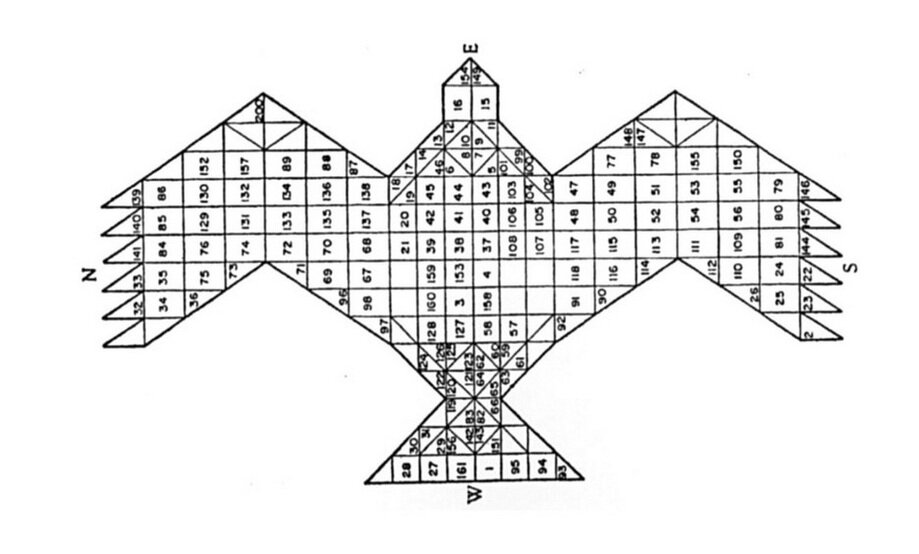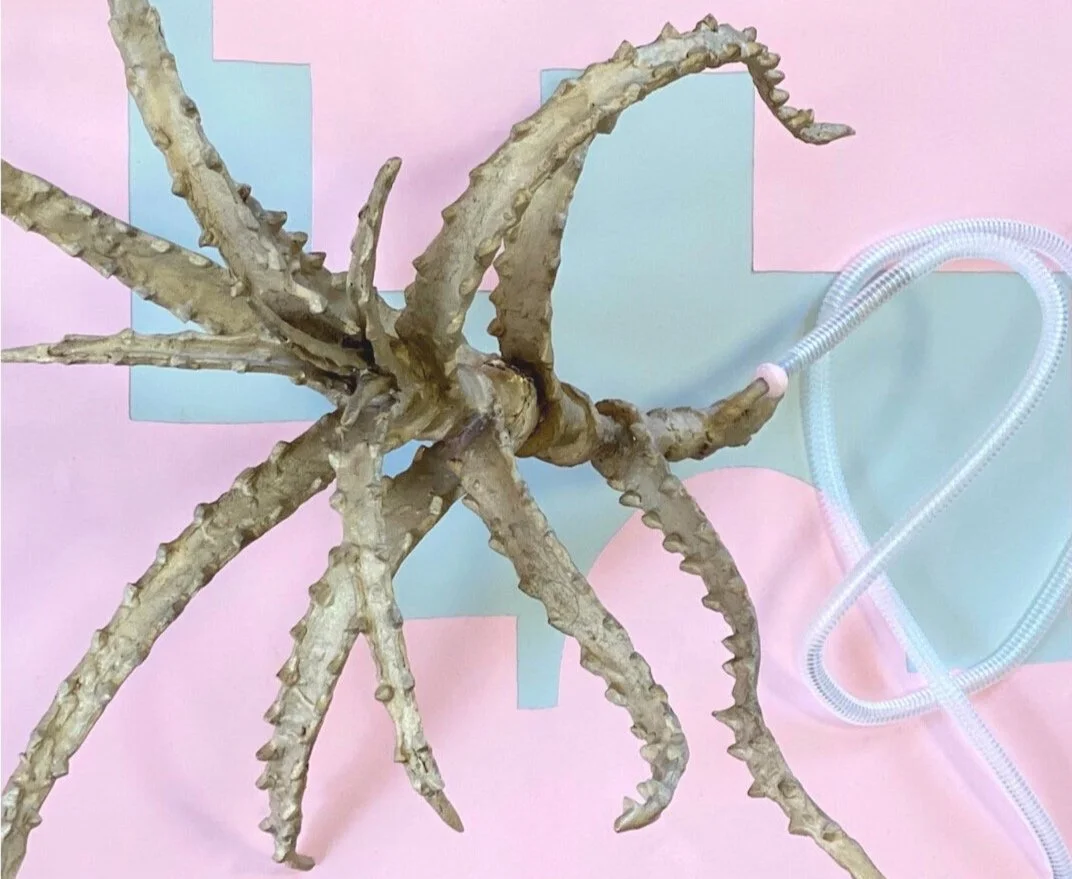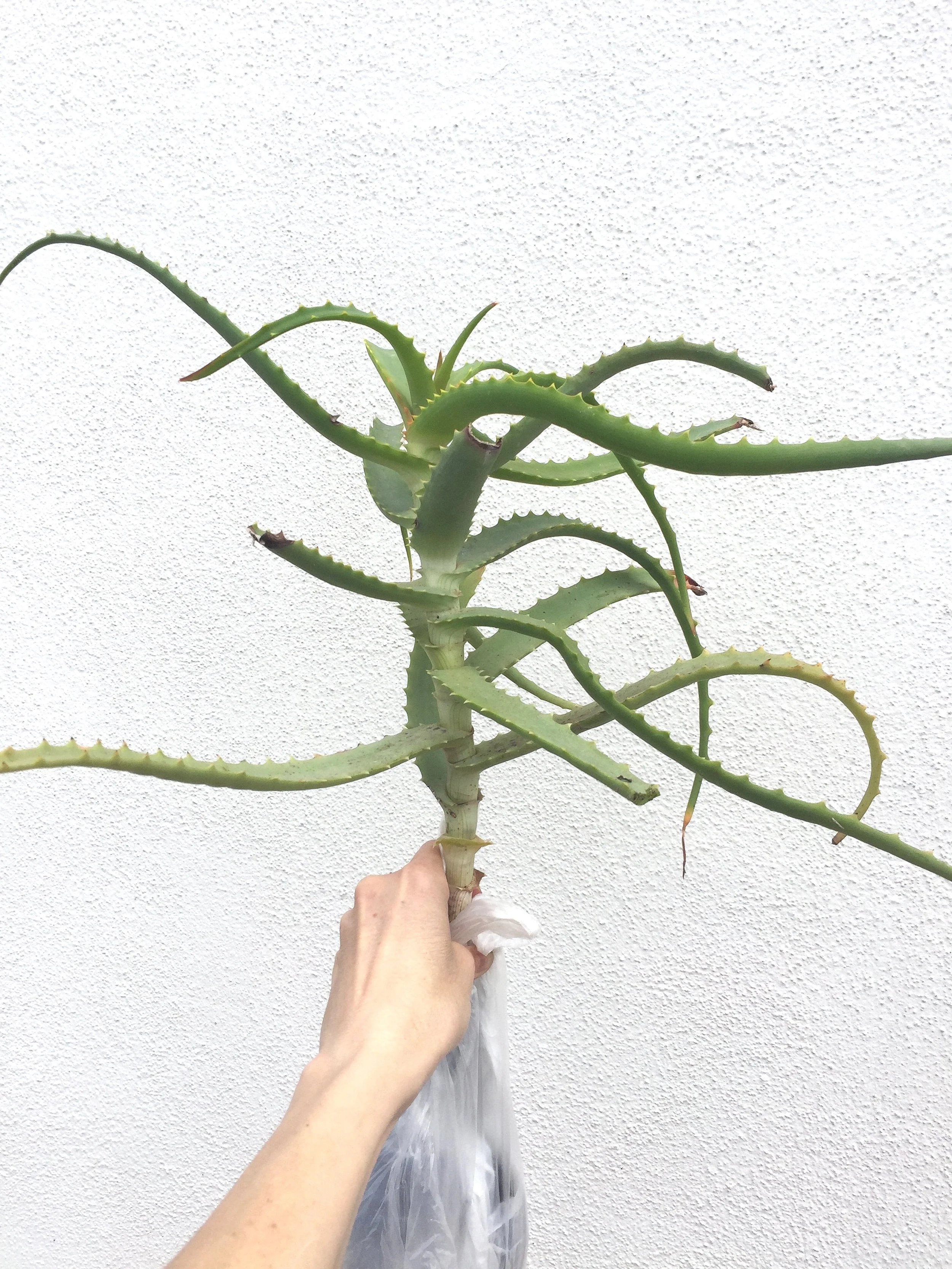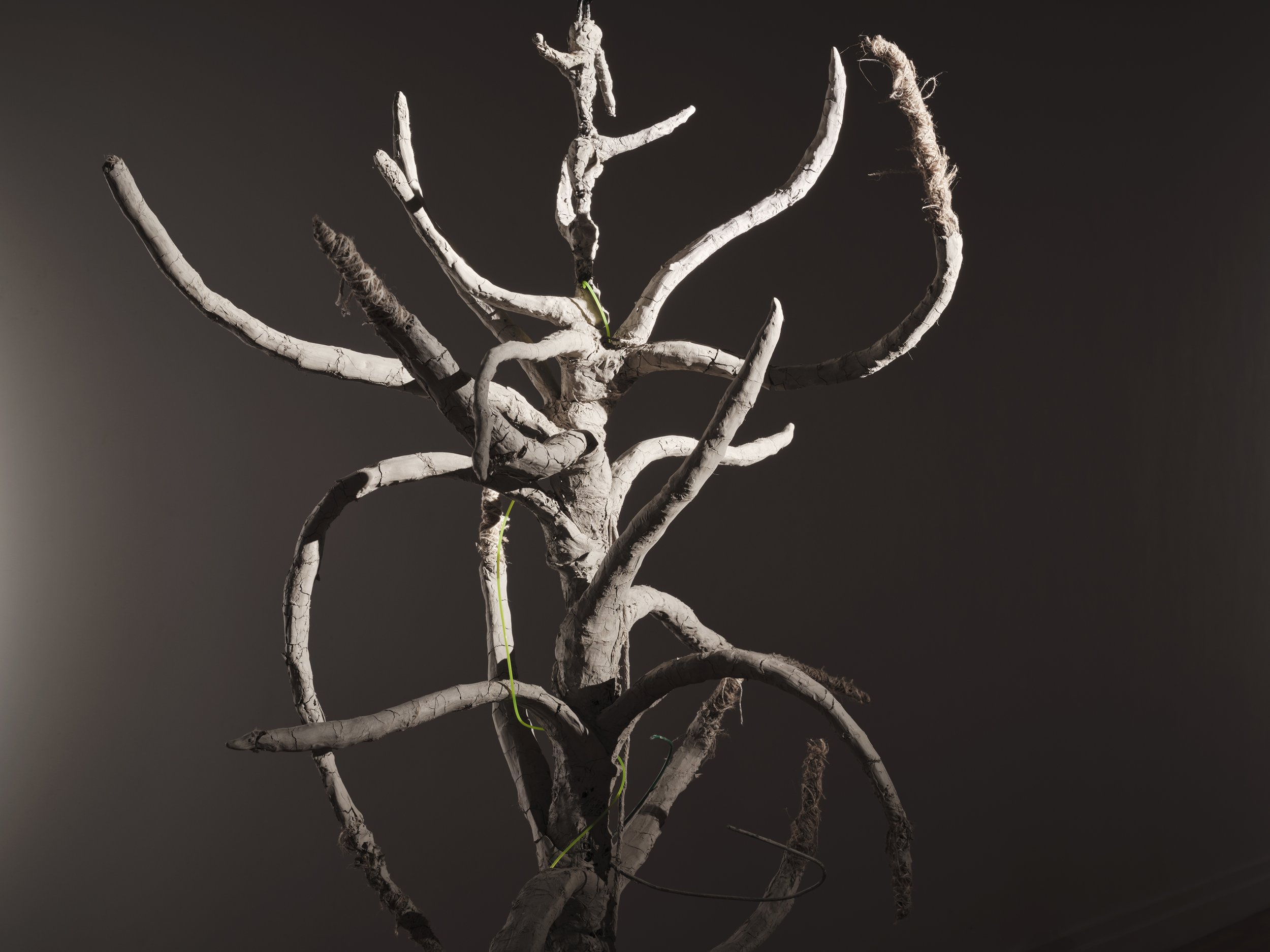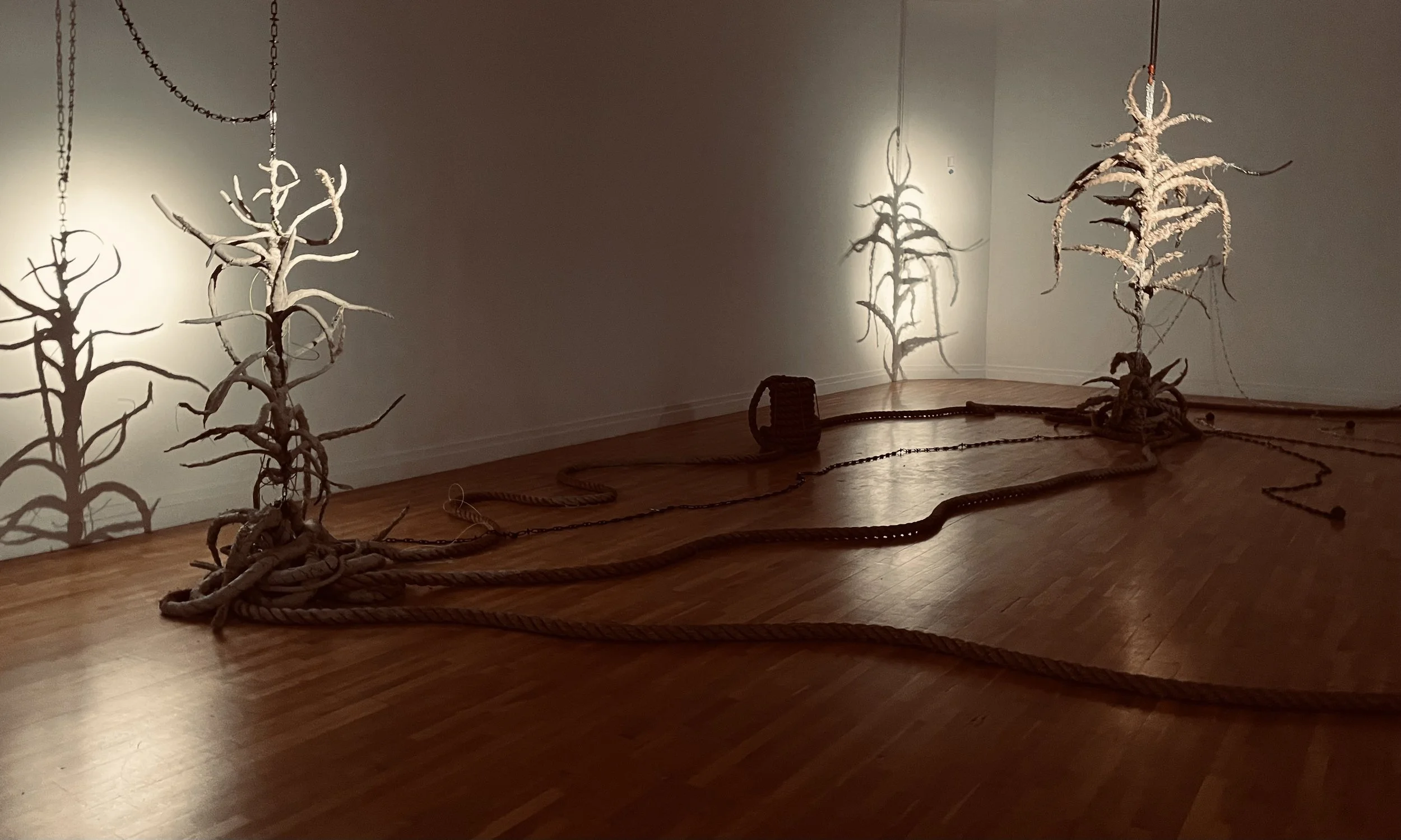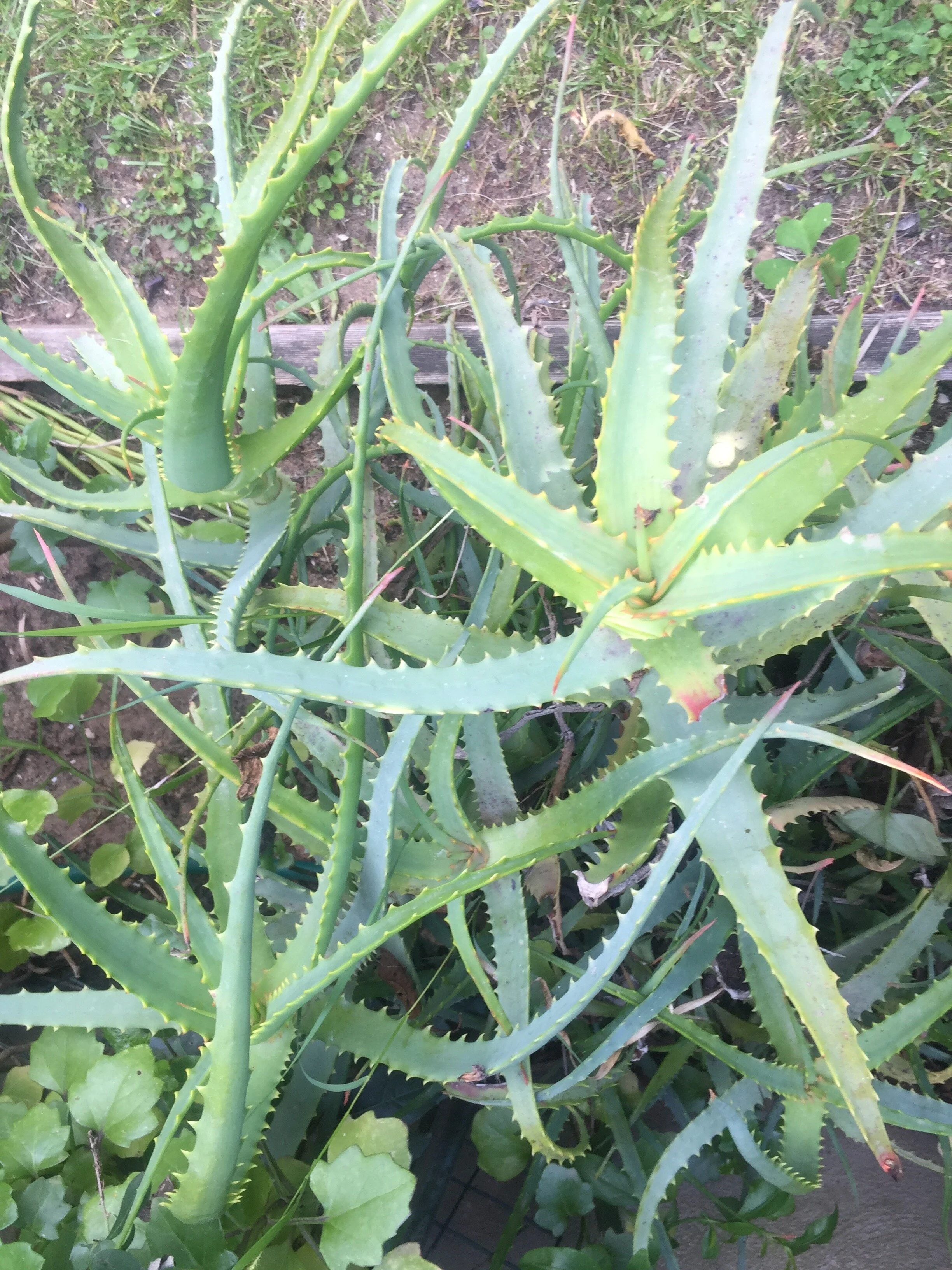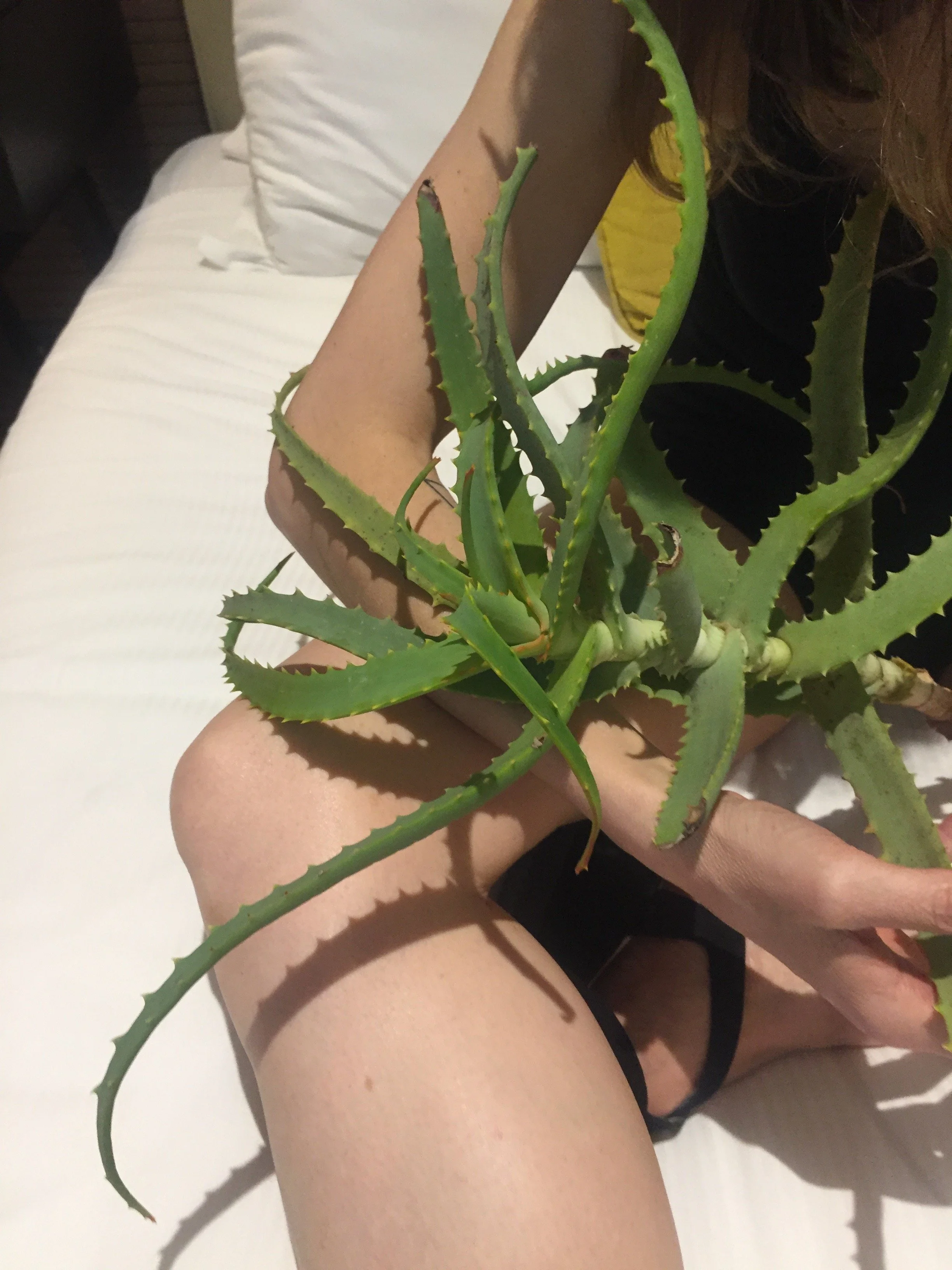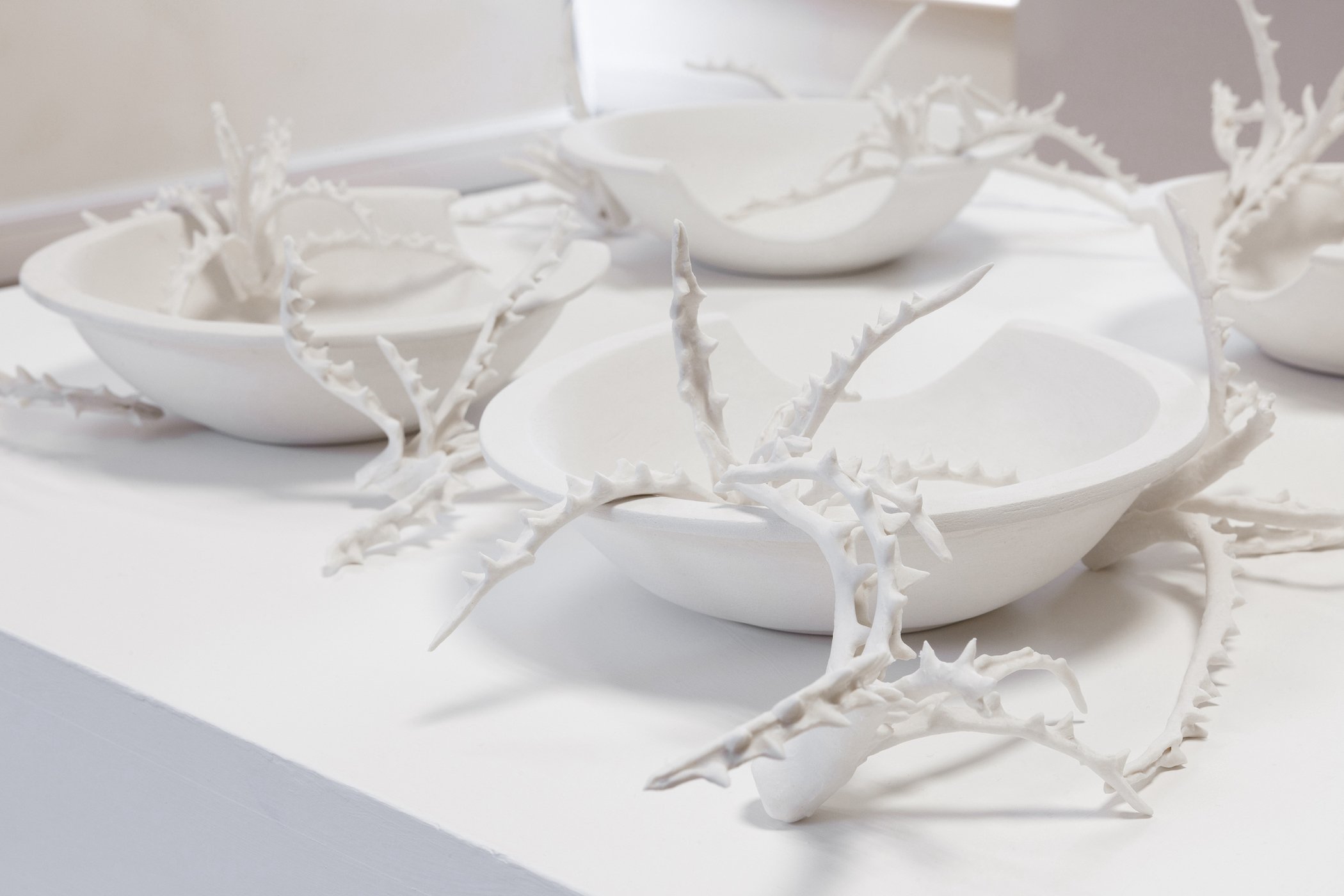on rhizomes
Cecilia Bullo’s work is deeply rooted in the concept of the Rhizome, drawing from both personal history and theoretical frameworks to explore themes of migration, memory, and interconnectedness. The Aloe Vera plant—an enduring presence in her practice—serves as a potent signifier of resilience, healing, and ancestral lineage. Originally cultivated in her maternal homeland of Italy, these plants were first planted by her grandmother, an artist herself, and continue to be used by her mother for their medicinal properties.
In a symbolic act of transplantation, one of these ancestral Aloe Vera plants was uprooted and re-rooted in Ireland just before the COVID-19 pandemic. This living entity, carried by Bullo across borders—through train stations, subways, and temporary lodgings—mirrored her own journey of displacement and re-settlement. The plant’s quiet persistence within her studio during the period of global isolation became a meditative companion, reinforcing the artist’s ongoing exploration of the Rhizome as a conceptual framework.
Drawing from Deleuze and Guattari’s Rhizome theory, Bullo’s work resists hierarchical structures, favoring instead a web-like, interconnected approach to identity, history, and materiality. The Aloe, with its ability to regenerate and thrive across geographies, becomes an organic metaphor for the fluidity of belonging and the resilience of the uprooted. These works, in essence, function as fossilized traces of memory—personal yet universal—charting a lineage that defies linearity, embracing multiplicity, connection, and adaptation.
